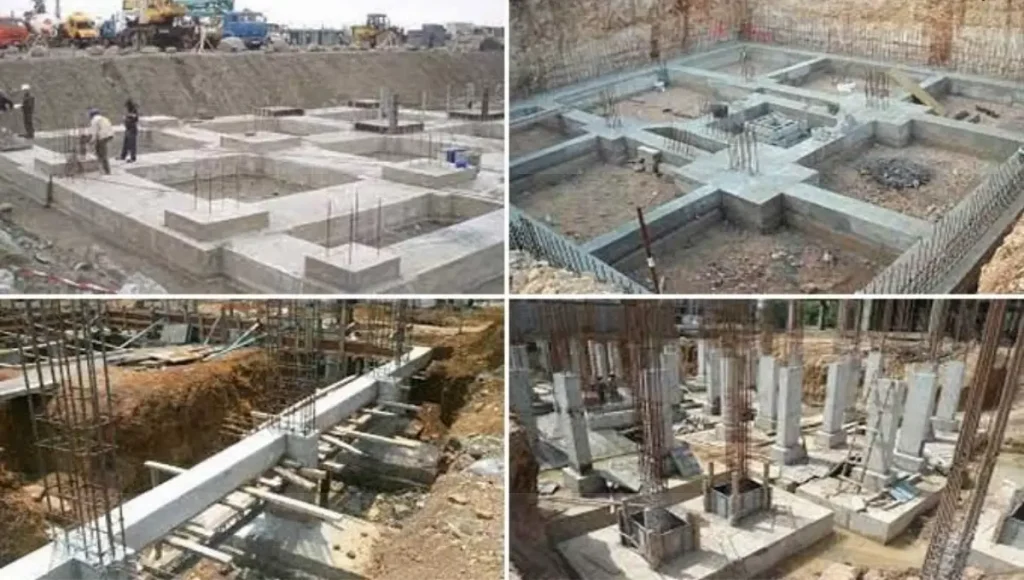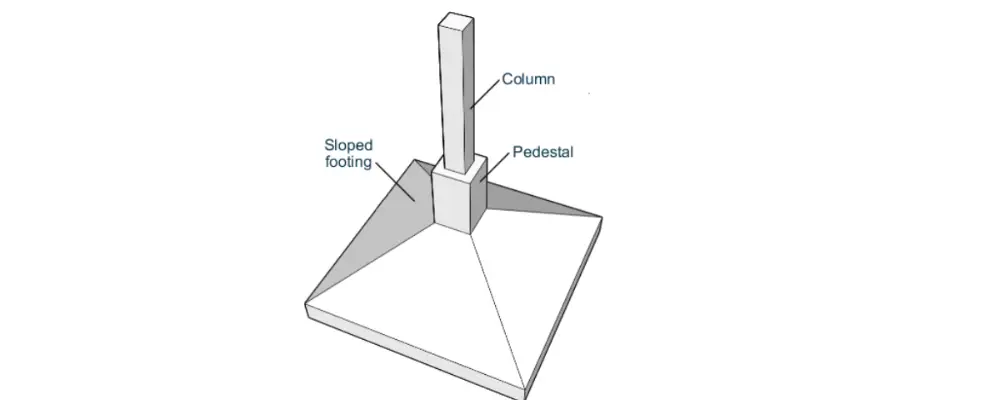Footings are the bedrock of any construction. They are crucial component that play a vital role behind every solid foundation. A footing is nothing but a structural element carefully designed to transfer the immense loads caused by a structure into the ground beneath safely.
It ensures that the building remains safe and upright without being subjected to structural failure or uneven settlement. Not surprisingly, footings are available in various designs and types, each with their own characteristics and challenges.
One of the widely used types is sloped footing. In this article, we’ll uncover the significance and specifications of sloped footing. Continue your reading to know more:
What is Sloped Footing?
A sloped footing, also termed a trapezoidal footing, is a type of isolated foundation. It is meticulously designed with sloped or inclined sides that help increase the contact of the footing’s surface area with the soil. The sides are extended from the base of the column to the outer edges of the footings. They allow for distributing the load of the building more efficiently and reduce pressure on the ground.
Benefits of Sloped Footing
Let’s have a look at the benefits of sloped footing:
Reduced Soil Pressure: Sloped footing has the benefit of spreading the loads and weight evenly over a large area of soil. It potentially reduces the soil pressure and the risk of settlement failure. This type of footing is quite essential for areas with unstable or soft soil conditions.
Increased Bearing Capacity: In comparison to flat footing, sloped-type footing maintains an increased contact area with the soil. It efficiently distributes the loads into the foundation, providing a higher bearing capacity. This makes it an ideal choice for structures on weaker soils and those subjected to carrying heavier loads.
Economical: Sloped footing consumes very little concrete, which drastically reduces the cost of material purchases in construction. This can be a suitable option for projects with specific budget constraints.
Adaptability: Unlike other footing types, sloped footing can easily adapt to uneven ground conditions. This flexibility is beneficial for designing construction projects on sloping ground or uneven sites without any need for leveling or extensive excavation.
Key Components of Sloped Footing
A sloped footing includes several key components such as:
Base: The bottom surface of the sloped footing has direct contact with the soil, is flat, and is wider than the top surface. This design is particularly curated to distribute the loads into the ground.
Sides: This footing has sloped or inclined sides, which have been carefully designed to optimise soil bearing capacity and load distribution.
Top Surface: Compared to the base, the top of the footing is smaller in area. It is connected to either the column or wall.
Materials Used in Sloped Footing
The materials used in sloped footing include:
Concrete: Concrete is the primary material used to construct the sloped footing. It provides essential rigidity, strength, and durability to withstand the structural load.
Reinforcement: Rebar (steel reinforcement bar) is embedded in the concrete to improve the footing’s strength and durability in areas with uneven soil conditions. The amount required and placement of reinforcement are typically based on the soil condition and load requirements.
Concrete Blocks: Concrete blocks are a more economical and cheaper option than other materials. They are easy to construct and don’t require any additional formwork to support. However, the are not waterproof.
Design Specifications
Size and Shape: Evaluate the footing area of construction based on the column load and soil-bearing capacity. Considering the soil condition and challenges in construction helps decide the suitable shape, such as rectangular or trapezoidal.
Soil Bearing Capacity: The footing design requires additional care and attention to ensure the safe bearing capacity of the soil. Conduct a thorough soil investigation to gain insights.
Concrete Mix Design: By considering the structural load and environmental conditions, you can specify the concrete’s compressive strength. It helps accurately predict the proportions of cement, water, and aggregates.
Reinforcement: Reinforcement is an important aspect to resist shear forces and bending moments caused by harsh weather conditions.
Calculation for Sloped Footing
The below-given is the formula for estimating the volume of the trapezoidal footing:
V=H/3∗(A1+A2+(SQRT(A1∗A2))
Here,
A1 = Area of lower portion
A2 = Area of upper portion
H = Height of trapezoidal portion
Construction Process of Sloped Footing

These are the steps involved in the construction process of sloped footing:
Excavation: Firstly, you need to excavate the soil to the required depth and width. Then level up the surface to the accurate depth and shape appropriate to the planned construction. Importantly, conduct a soil test to ensure the soil’s moisture content and bearing capacity.
Reinforcement: Install rebar or reinforcement steel bar within the excavation. Use wire ties to secure the rebar together to form a cage. To prevent corrosion or any other damages, cover the rebar with adequate concrete mix.
Concrete Pouring: The next step is to construct the formwork, either using steel forms or wooden planks. Pour the concrete mix at the appropriate consistency into the formwork to ensure the required strength and consistency.
Curing: Cover the concrete with plastic sheets to avoid rapid drying, which can lead to cracks and leakages. It is essential to monitor the temperature periodically and maintain sufficient moisture content until a specified number of days.
Drainage System: Constructing a drainage system is necessary to divert water away from the footing. You can install drainage pipes to collect water in and around the footing.
Final Wordings
Footings are important structural elements in a foundation, which distributes the loads and weight evenly to the ground. They are a simple way to prevent structural failure or settlement. In comparison to other types, sloped footing is quite beneficial and simple to construct, especially on uneven surfaces and wet soil conditions.

